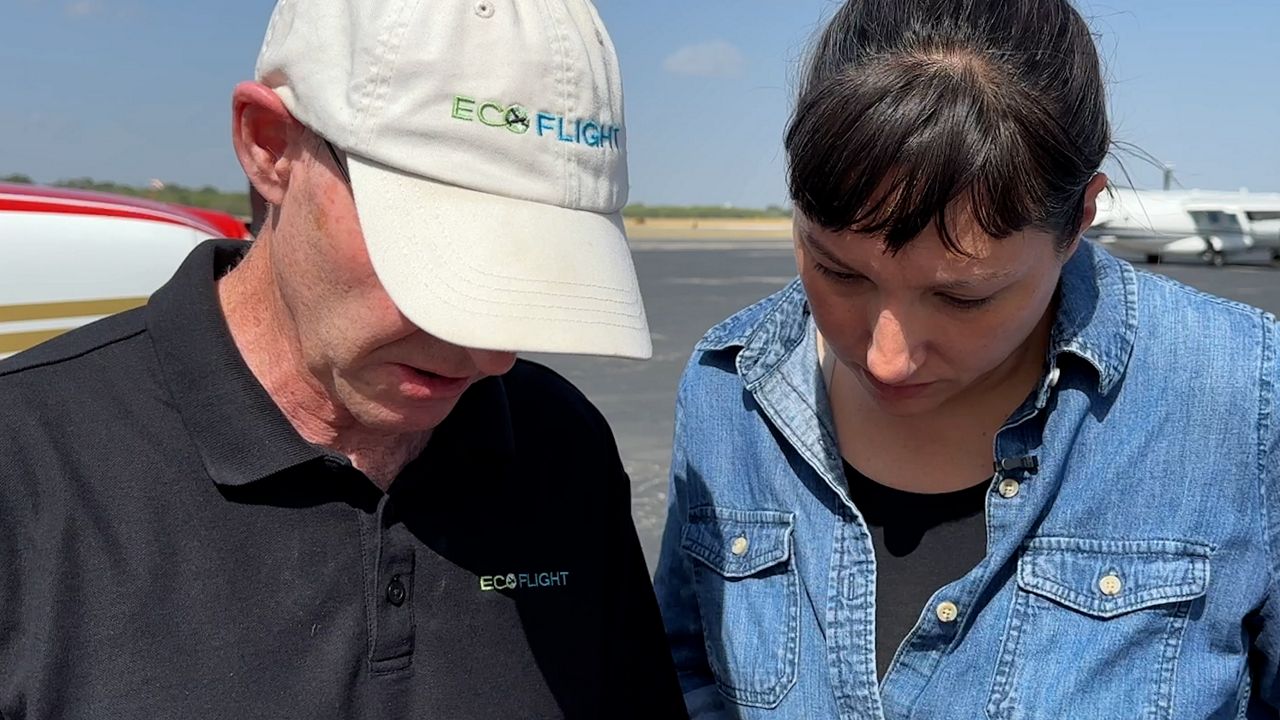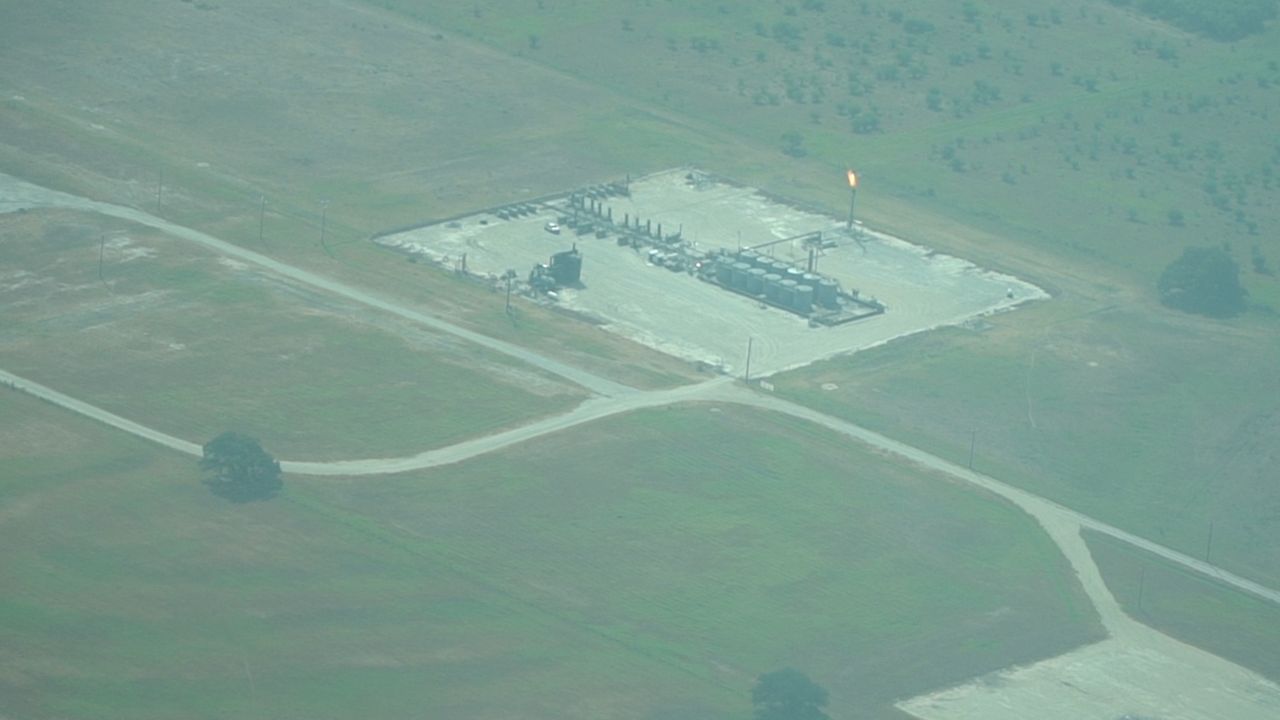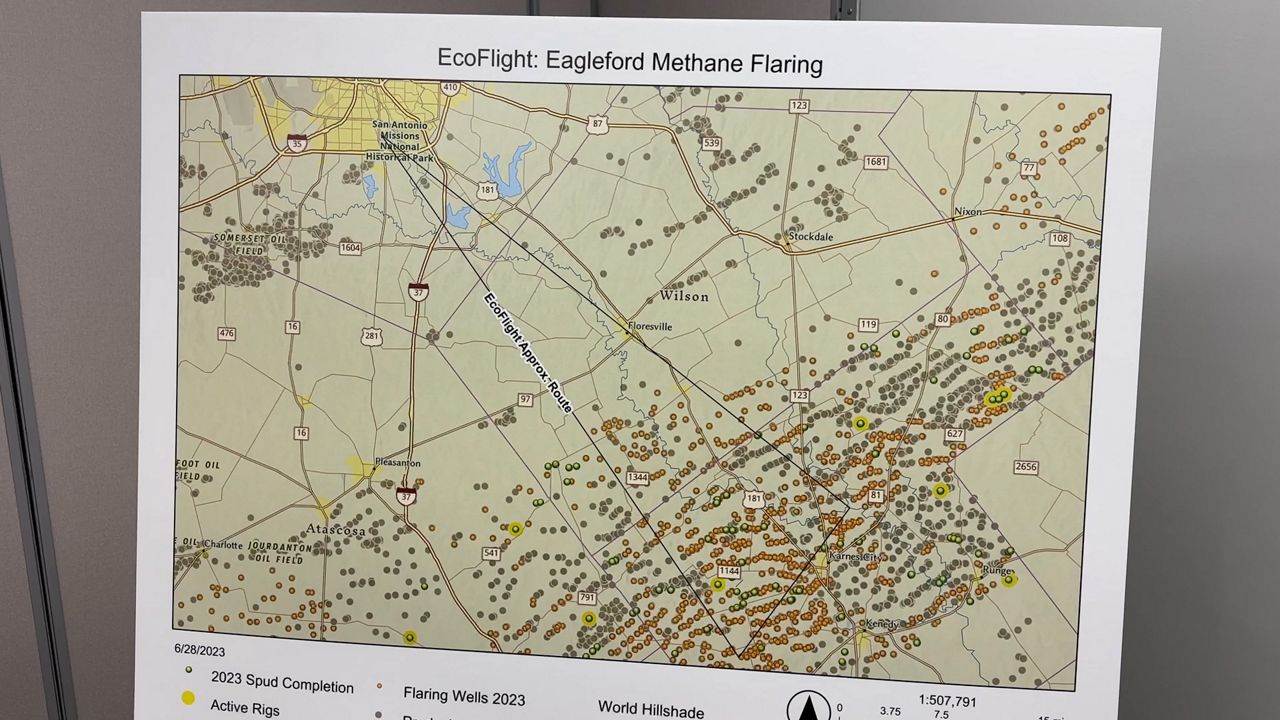By Dylan Scott
August 9, 2023
SAN ANTONIO — A ninth-generation Tejana, Virginia Palacios of Commission Shift knows the Eagle Ford shale basin well. Thanks to a lift from EcoFlight and assistance from the Environmental Defense Fund, the executive director got a bird’s-eye briefing of the ongoing massive risk-reward conversation.
“It’s important as Texans to protect our way of life by addressing these emissions now,” Palacios said. “Methane — because it’s so powerful the moment that it’s emitted and because we know we can reduce these emissions today — is a really important place to reduce these catastrophic warming impacts.”
Along the South Texas horizon, oil and gas wells are flaring, creating a byproduct called methane, a precursor to air pollutants. Climate experts say the odorless gas will produce 80 times more pollutants than carbon dioxide will in the next 20 years, resulting in billions of dollars in environmental, economic and health concerns yearly.

CS Executive Director Virginia Palacios and EcoFlight pilot Gary Kraft discuss their upcoming flight over oil and gas wells in the Eagle Ford Shale. (Spectrum News 1/Dylan Scott)
“It makes it all real. It’s easy to see what the scientists are talking about and see what exactly is occurring right in our backyards or just one county away from us that maybe we weren’t so in touch with before,” Palacios said. “I think one thing we all came away from this is realizing how close to homes these flares and polluting facilities can be.”
Many of these nonprofit environmental groups are using this data to push reform for the oil and gas industry. Activists such as Palacios and EDF Midcontinent Regulatory and Legislative Manager Elizabeth Lieberknecht are calling on the Environmental Protection Agency (EPA) and Railroad Commission to tighten regulations now.
“Oil companies need to be subject to this standard so we can level the playing field and ensure that critical emissions are happening across the industry, not just the operators that make voluntary commitments to reduce the emissions,” Lieberknecht said.
With yearly advancements in filtering, monitoring systems, drones, leak detection and repair, Todd Staples, president of the Texas Oil and Gas Association (TXOGA), says the state hopes to end routine flaring by 2030. According to the World Bank and Energy Information Administration, such practices decreased by almost 10% nationally from 2021 to 2022. It was the largest reduction in a decade.

A methane flare is visible over the Eagle Ford Shale, releasing harmful pollutants and greenhouse gases into the environment. (Spectrum News 1/Dylan Scott)
“Ninety-six percent of the products we use on a daily basis has part of its basic building blocks in oil or natural gas,” Staples said. “Taking care of our environment is a global responsibility. We think all industries and citizens have a responsibility and a role to play, and we’re glad no nation is doing more to make progress here.”
If Texas was an individual nation, it would still rank among the world’s largest polluters in several categories. That is why advocates such as Palacios aim to keep the field honest and continue to emphasis the environmental clock is ticking.
“If we could reduce methane today, we would see benefits in terms of our climate within the next two decades,” Palacios said.

Map of Flaring Wells. (Spectrum News 1/Dylan Scott)